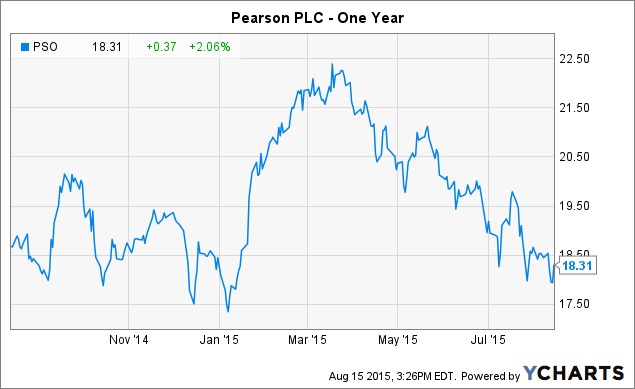Common Core: A Real Test For Pearson
Summary
- Common Core education requirements are controversial and expensive.
- Pearson is the market leader but suffering recent setbacks.
- Demographics provide a rising tide in Education.
The Common Core State Standards Initiative provides a framework for standardized testing in English and Mathematics for school children. It is designed to ensure students graduating from high school are prepared for college and for careers. And it has become a highly debated and contested issue.
Common Core has been adopted by 46 states, but 3 have recently withdrawn and several more may withdraw. One issue of the Common Core standardized tests has been criticism of the teaching methodology and of the testing questions. Another issue is the poor student results. Only one third of the New York State third to eighth graders taking the tests this year had a passing grade, and that is an improvement over 2014.
There is a lot of money involved. States implementing Common Core teaching materials and testing have awarded large multi year contracts to both not-for-profit and for-profit companies. In 2012, the Thomas B Fordham Instituteestimated Common Core implementation would cost US schools between $3 and $12 billion nationally.
Interestingly, the market leader in US educational standardization has been is not a US company. Pearson PLC (NYSE:PSO) from the UK trades in New York with ADR's. Pearson is an international media company becoming more and more focused on the education segment after recent divestitures. In July, Pearson announced the sale of the Financial Times to Nikkei. And this month, they announced the sale of their stake in the Economist. The other major non-educational asset, Penguin Books, has been merged with Bertelsmanns' Random House. While Pearson retains 47% of the combined entity, they may look to reduce the stake.
In July the US Senate passed a bipartisan bill that gave most the control over testing and curriculum to the individual states. The bill also reconfirmed the commitment to standardization and the annual testing schedule. Even if Common Core is discarded in favor of individual State standardization programs, States will need many more investments in materials, equipment and testing. Although a market leader, headwinds over the last year have hurt Pearson. Pearson lost the large California testing contract to Education Testing Service which has a tentative 3 year $240 deal. ETS also took a multi year testing contract in Texas, where Pearson had been incumbent for decades. A six year standardized assessment system contract for $220 million in Florida was awarded to American Institute of Research over Pearson. And in New York State, Questar Assessment Inc took a five year $44 million testing contract from Pearson.
A recent win for Pearson was a contract in Minnesota where they took the business from the American Institute of Research. On the Q2 2015 earnings call, Pearson CEO John Fallon tried to put the loss of GBP100 million of annual revenue from US State testing contracts in perspective:
In the political fallout from all that we've lost as you've known and would have seen a number of high profile testing contracts worth towards around £100 million in sales this year that we won't have in 2016. Obviously, we hate losing any business in any circumstances, but context here is important. First point, the state and assessment services, which this related to account for around 7% of Pearson's total annual sales, we will still lead the market in state -- a national assessment service next year with a share of around 30%, that's slightly lower, but only slightly lower than it was before we started the shift from no child left behind to common core back in 2012.
It is important to consider that although Pearson gets 61% of revenues and 64% of adjusted operating profit from its North American businesses, operations in other regions are also important. Revenues from operations in the UK, Italy and Australia together account for 24% of revenues. And operations in growth regions including South Africa, Brazil, India and China account for 15% of revenues.

On July 24, Pearson released first half revenue of GBP2.16 billion which is an increase of almost 6% year to year. Most of the annual increase when reported in pounds is from favorable currency exchange. The earnings for first half are not very significant in such a back half loaded industry, but showed an 6% decrease year to year. Pearson reiterated full year earning guidance of $1.17 to $1.25 per ADR. The mid year dividend was paid at 28 cents per ADR. Note, following UK company practice, the mid year dividend is a normally minor, and the full year dividend paid in March can be expected to be as much as twice the amount of the midyear.
CONCLUSION: Pearson is focusing on education, where it has been a dominant player despite some recent missteps. Based on the last 12 months, it is paying a 4.3% dividend which has no UK withholding tax for US holders of the ADR. The education testing market is poised to grow, and Pearson can benefit if Common Core: A Real Test For Pearson - Pearson plc (NYSE:PSO) | Seeking Alpha:


